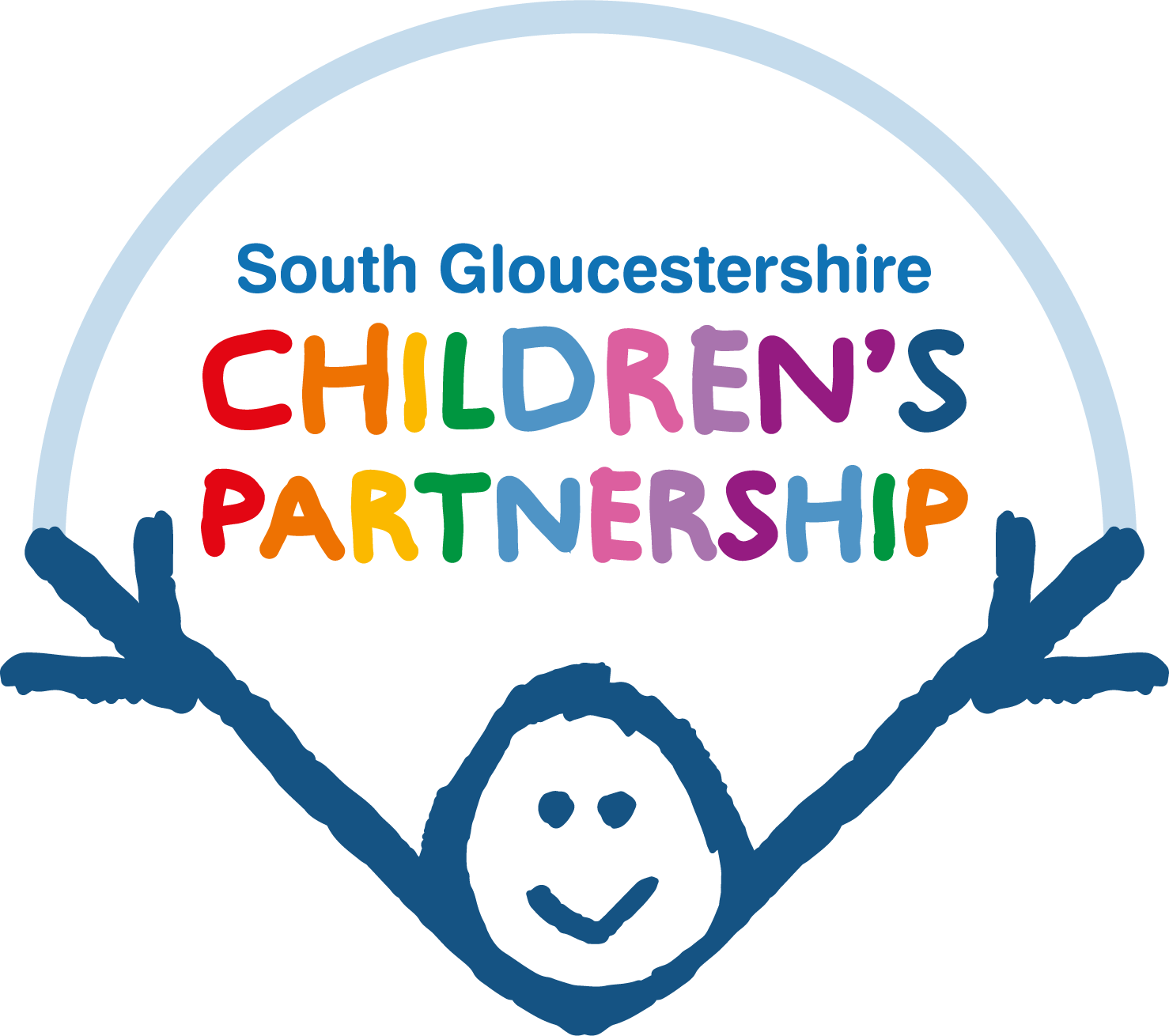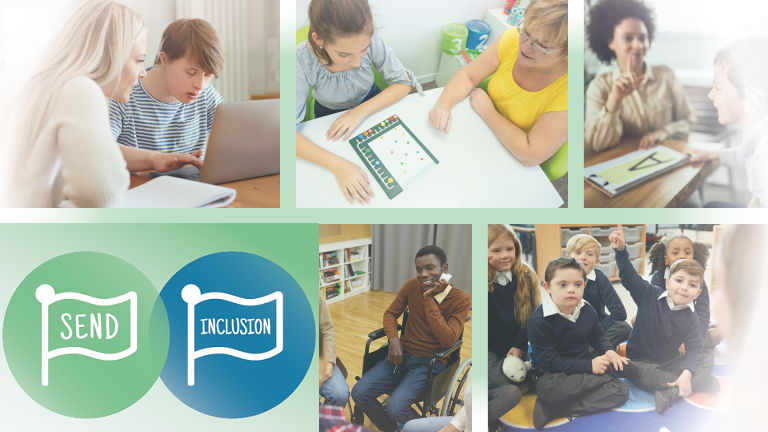The South Glos Way Inclusion Toolkit
In South Gloucestershire, we are committed to working together and in partnership with all agencies providing services to children, young people and their families.
The South Glos Way toolkit provides an evidence-based reference for schools and settings, following the principles of the graduated approach.
A range of professionals have contributed to the South Glos Way toolkit. These documents provide advice and guidance to help educational settings, including early years’ providers, schools and specialist provisions to continue to build inclusive, enabling environments with understood processes and protocols that enable all children and young people with SEND, including some of our most vulnerable learners, to thrive.
Schools can access the PDF file of the Toolkit launch PowerPoint presentation (October 2020) here.
If you have any queries about the contents of this toolkit, please email us.
Toolkit sections
- 1.1 – Introduction and Purpose of the Toolkit
- 1.2 – Definition of Special Educational Needs and Disability
- 1.3 – National and Local Context
- 1.4 – Vision and Principles: The South Glos Way
- 1.5 – Leadership of SEND – currently being reviewed
- 1.6 – SEND Code of Practice: Statutory Guidance
- 1.7 – The Legal Framework
- 1.8 – Working with Families
- 1.9 – A Person Centred Approach
- 1.10 – Co-production
- 1.11 – The South Glos Local Offer
- 1.12 – The Role of the EHCP Co-ordination Team
- 1.13 – The Role of SEND Clusters
- 1.14 – Special Schools and Specialist Provision
- 1.15 – Structure Chart and South Glos Services
- 1.16 – #SouthGlosConnect Recovery Curriculum and the Toolkit
- 2.1 – Universal Provision: High Quality Teaching
- 2.2 – The Graduated Approach: Assess, Plan, Do and Review
- 2.3 – The South Glos Graduated Approach: All, Some, Few
- 2.4 – The Four Broad Areas of Need
- 2.5 – The Graduated Approach: Cognition and Learning
- 2.6 – The Graduated Approach: Communication and Interaction
- 2.7 – The Graduated Approach: Social Emotional and Mental Health
- 2.8 – The Graduated Approach: Sensory and/or Physical
- 2.9 – Early Help Arrangements and Preventative Services
- 2.10 – Supporting CYP with Medical Needs (see also section 9 below)
- 2.11 – Education, Health and Care Needs Assessments (currently being reviewed)
- 2.12 – Effective Transition
- 2.13 – Training and Workforce Development (under development)
- 3.1 – Guidance on SEMH and Reducing Exclusions
- 3.2 – The Role operational and financial procedures of the High Risk Group and High Risk Group Plus (inc. appendix)
- 3.3 – Fair Access Protocol (external link)
- 3.4 – Managed Move Guidance/Supportive Transfers – under review
- 3.5 – PRU Provision (PLC) Placement Process (external link)
- 3.6 – PRU (PLC) Referral Form (external link)
- 3.7 – Reduced Timetables Guidance
- 3.7.1 – Flexi-schooling Guidance
- 3.8 – Alternative Provision Guidance
- 3.9 – Alternative Provision Provider Directory
- 3.10 – Anxiety Toolkit
- 3.11 – Understanding Adversity and Trauma
- 3.12 – Mental Health & Wellbeing Pathways
- 3.13 – Emotionally Based School Avoidance (EBSA) Toolkit
- 3.14 – South Gloucestershire Schools Belonging Toolkit January 2025
- 4.1 – Funding in Mainstream Provision (Currently being developed)
- 4.2 – Funding: SEND Clusters (in development). For High Risk Group funding arrangements see document 3.2 – The role, operational and financial procedures of the High Risk Group (HRG)
- 4.3 – Funding in Resource Bases and Specialist Provision (Currently being developed)
- 4.4 – Allocation of top-up funding (element 3) for children and young people with SEN – Operational Guidance
- 4.5 – Early Years Inclusion Support Funding & Transition Support Funding – Operational Guidance
-
- 4.5.1 – EYISF Application (April 25)
- 4.5.2 – Exceptional Circumstances EYISF and TSF (April 25)
- 4.5.3 – EYISF request for rebanding (April 25)
- 4.5.4 – EYISF and TSF Year End Review (April 25)
- 4.5.6 – TSF Application – EYISF awarded (April 25)
- 4.5.7 – TSF Application (April 25)
- 4.5.8 – TSF End of Year Review (April 25)
-
- 5.1 – The Role of the CEO/Headteacher
- 5.2 – The Role of Governors/Trustees
- 5.3 – The Role of the SENCo
- 5.4 – The Role of the Teacher
- 5.5 – The Role of Support Staff
- 5.6 – Parent Carer Forum and SENDIAS South Gloucestershire
- 5.7 – Children in Specific Circumstances
- 5.8 – Best Practice Annual Reviews
- 5.9 – Writing the SEN School Information Report
- 5.10 – Delayed Transfer/Repeating a Year Guidance
- 5.11 – Children Missing Education (external link)
SEN Support Forms
EHC Needs Assessment Forms and guidance
- 6.4 – Education, Health and Care Needs Assessment Request Form for Educational Settings
- 6.5 – Education, Health and Care Needs Assessment Request Form for Parents/Carers or CYP (over age of 16)
- 6.5.1 – EHCP Decision making guidance
- 6.6 – Appendix A CYP Contribution to EHC Needs Assessment
- 6.7 – Appendix A Parent Carer Contribution to EHC Needs Assessment
- 6.8 – Appendix B Educational Setting Contribution to EHC Needs Assessment
EHCP Annual Review Forms
- 6.9 – EHCP-annual-review-meeting-form
- 6.10 – EHCP Annual Review School Contribution Form
- 6.11 – EHCP Annual Review CYP Contribution Form
- 6.12 – EHCP Annual Review Parent/Carer Contribution Form
- 6.12.1 – EHCP Annual Review Flowchart
Other forms and policies
- 6.14 – Auditing Provision: Whole School SEND Reviews
- 6.15 – Whole School Accessibility Audit
- 6.16 – Individual Pupil Accessibility Audit
- 6.17 – SEND Pupil Risk Assessment
- 6.18 – Personal Needs Plan: Bathroom Agreement/Personal Care Plan
- 6.19 – Supporting Children & Young People with Medical Needs – see ‘Section 9: Health’
- 6.20 – HRG and SEND Cluster Impact Review
- 6.21 – High Risk Group Referral Form 2025 26
- 7.0 – Contents
- 7.1.01 – Introduction – purpose of the toolkit
- 7.1.02 – Definition of Special Educational Needs and Disabilities (SEND)
- 7.1.03 – Vision and principles
- 7.1.04 – Leaders of SEND
- 7.1.05 – The SEND Code of Practice
- 7.1.06 – The Legal Framework
- 7.1.07 – Working with families
- 7.1.08 – Person Centred Planning
- 7.1.09 – Co-production
- 7.1.10 – South Glos Local Offer
- 7.1.11 – The Role of EHCP Team
- 7.1.12 – SEN Clusters
- 7.1.13 – Special school & Specialist Provision
- 7.1.14 – Staffing Structure
- 7.2.01 – The Whole Team Approach
- 7.2.02 – Universal provision – High Quality Teaching
- 7.2.03 – Roles and Responsibilities in EY’s settings
- 7.2.04 – Graduated Approach
- 7.2.05 – Developing inclusive environments and strategies
- 7.2.06 – Effective Transition
- 7.2.07 – Admission to school – delayed and deferred entry
- 7.2.08 – Early Help Arrangements and Preventative Services
- 7.2.09 – Supporting CYP with Medical Needs
- 7.2.10 – Educational Psychology Service Early Years
- 7.3.01 – The Graduated Approach Assess, Plan, Do, Review
- 7.3.02 – South Gloucestershire’s Graduated Approach All, Some, Few
- 7.3.03 – The Four Broad Areas of Need
- 7.3.04 – Inclusive Practice
- 7.3.05 – Working with other Professionals
- 7.4.01 – Education, Health and Care Needs Assessments
- 7.4.02 – EHCna Process Flow Chart
- 7.4.03 – EHCna Form Guidance
- 7.4.04 – Providing Educational Advice For An EHC Needs Assessment
- 7.5.01 – What is an EHCP
- 7.6.01 – EHCP Annual Review
- 7.7.01 – Universal Funding
- 7.7.02 – SEND Funding
- 7.7.03 – Supporting families with funding
- 7.8.01 – How health services are delivered
- 7.8.02 – Supporting CYP with medical needs
- 7.8.03 – Health – Supporting Children with SEND and their Families
- 10.1 – An introduction to children’s social care (external link)
- 10.2 – Care and support for children and families (external link)
- 10.3 – Care and support for adults (external link)
- Appendix 1 – Glossary
- Appendix 2 – A Guide to Making Conversations with Schools Count for All Families
- Appendix 3 – Signposting Parents: Information, advice and support (external link) / Things to do (external link)
- Autism Toolkits
Primary Schools – Autism Toolkit
Secondary School – Autism Toolkit
Appendix 1 Sensory integration for Autism toolkit
Appendix 2 Sensory analysis questionnaire - Appendix (Section 7.1)
Education Improvement and Commissioning structure chart
Portage Information for parents and carers
Signposting Parents
Virtual School structure chart
Early Years Childcare structure chart - Appendix (Section 7.2)
Individual healthcare plan Information to support EP request
One page profile
PEN PORTRAIT
Pupil Premium
Setting informaiton – EY’s consultation
Supported transition 2021
Transition guidance notes for practitioners
Additional Guidance for Requesting Early Years EP Involvement
ART form
Covid information for families
Early Help Assessment and Plan – Partner Agencies Oct 2023
Early Help Review and Action Plan – Partner Agencies Oct 2023
Early Years Consultation Meetings Educational Psychology
Early Years Transition document
EP consultation consent form - Appendix (Section 7.3)
Initial individual child support meeting
One page profile
SEN support plan and review
The Childs Voice final March 2021
Working in Patnership with Parents – Holding a Succesful Meeting
Evidence of Graduated response
Evidence Record for SEN plan
Individual healthcare plan
Information sharing consent form - Appendix (Section 7.4)
Education Setting request Education Health guidance to support application form 6.4
Educational Advice – help sheet
EHC na process flow chart
EHCP-Decision-making-guidance-2021_
One page profile
Provision Map guidance
Blank Provision Map
Education Health and Care Needs Assessment Request Form from Parents Carers or CYP (if over 16)
Education Setting request Education Health and Care (EHC) needs assessme.._word - Appendix (Section 7.5)
EHCP consult letter LA decide
Evidence of Graduated response for EHCP - Appendix (Section 7.6)
Annual Review CYP Contribution Form
Annual Review Parent_Carer Contribution Form
One page profile
EHCP annual review meeting form
EHCP Annual review School contribution - Appendix (Section 7.7)
IF individual
IF Cohort - Appendix (Section 7.8)
Individual healthcare plan - Early Years Autism Toolkit
Autism Toolkit – Early years
Appendix 1 Sensory integration for Autism toolkit
Appendix 2 Sensory analysis questionnaire

